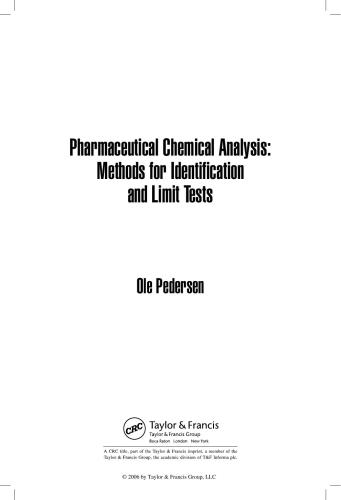

Most ebook files are in PDF format, so you can easily read them using various software such as Foxit Reader or directly on the Google Chrome browser.
Some ebook files are released by publishers in other formats such as .awz, .mobi, .epub, .fb2, etc. You may need to install specific software to read these formats on mobile/PC, such as Calibre.
Please read the tutorial at this link: https://ebookbell.com/faq
We offer FREE conversion to the popular formats you request; however, this may take some time. Therefore, right after payment, please email us, and we will try to provide the service as quickly as possible.
For some exceptional file formats or broken links (if any), please refrain from opening any disputes. Instead, email us first, and we will try to assist within a maximum of 6 hours.
EbookBell Team

4.8
74 reviewsComplete, referenced information in an easy-to-use format
Many of the monographs in the European Pharmacopiea, the industry standard test for certain groups of ingredients and excipients, do not describe the tests in full, but reference general methods based on test-tube chemistry. When a test fails, you need to know what went wrong, how it can be fixed, and how to convince QA\QC that the tested material is okay. This gives you little time to dig out the relevant scientific literature, literature that is often so old it doesn’t show up in an electronic search.
Making this knowledge easily accessible and directly applicable to work in the lab, Pharmaceutical Chemical Analysis: Methods for Limit Tests and Identifications explains the purpose of these older tests, the chemistry involved, and hazards to avoid. The book covers the identification of ions and functional groups tests and limit tests respectively. It covers subjects relevant to all the pharmacopoeial identification/limit test and then goes on to describe the individual tests in chapters organized and named as they appear in the European Pharmacopoeia. Each chapter begins with a short discussion on the purpose and rationale of the tests, followed by a review of the physical and chemical characters of the target ion or compound. The author describes the chemical background and logic of the individual procedural steps of the test with formulas and reaction and provides tips on the strengths and weaknesses of these techniques in terms of specificity, ruggedness, and potential procedural pitfalls.
Strict regulatory requirements and economic pressures make the pharmaceutical industry understandably reluctant to replace a test that is simple, cheap, and performs well with expensive, unvalidated instrumental techniques. This resource bridges the gap by providing an in-depth understanding of the principles behind the European Pharmacopoeia tests and how to use them, saving you valuable production time.